On the middle day of our seven-day cruise, we would not be cruising at all. The next dam upriver, the Aldeadávila Dam, is a huge, 460-foot-tall, gravity arch dam that has no locks. Thus, this is as far as most Douro River cruises go.
Instead of sailing today, we will be taking the bus (same driver, same guide) to the Spanish city of Salamanca where we will spend the day.
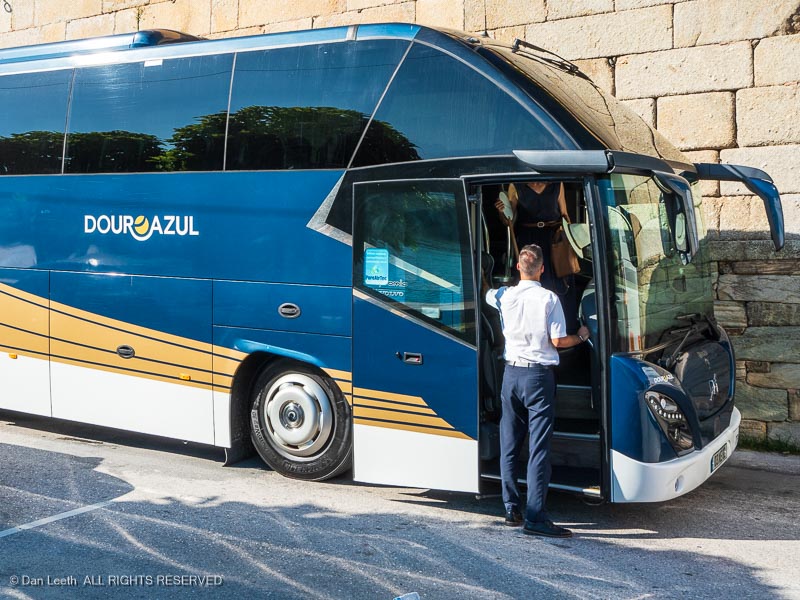
Unfortunately, the bus was scheduled to depart at 8:00 a.m., about the time I normally get out of bed. Fortunately, the boat’s coffee maker was working and breakfast was being served.
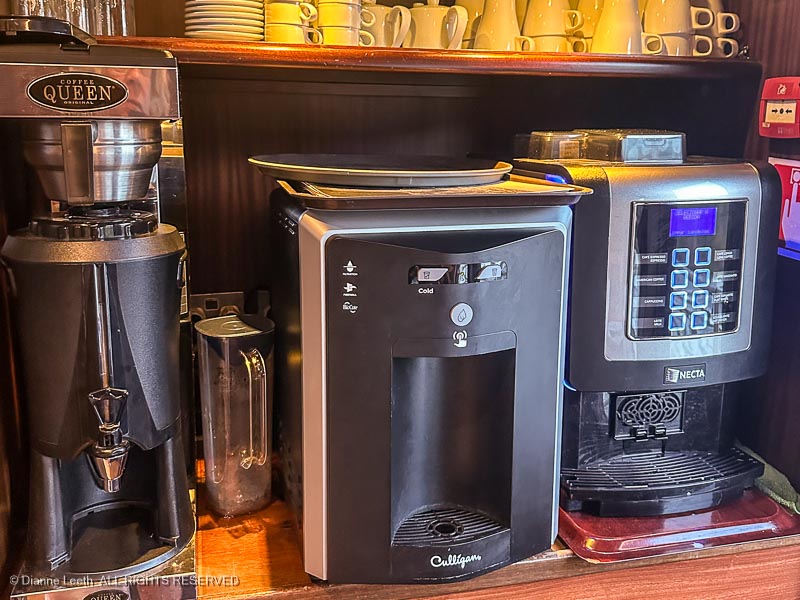
On our two-hour drive from Barca d’Alva, Portugal, to Salamanca, Spain, I stared out the bus window at acres of sunflower fields. This was scenery only a Kansan would love.
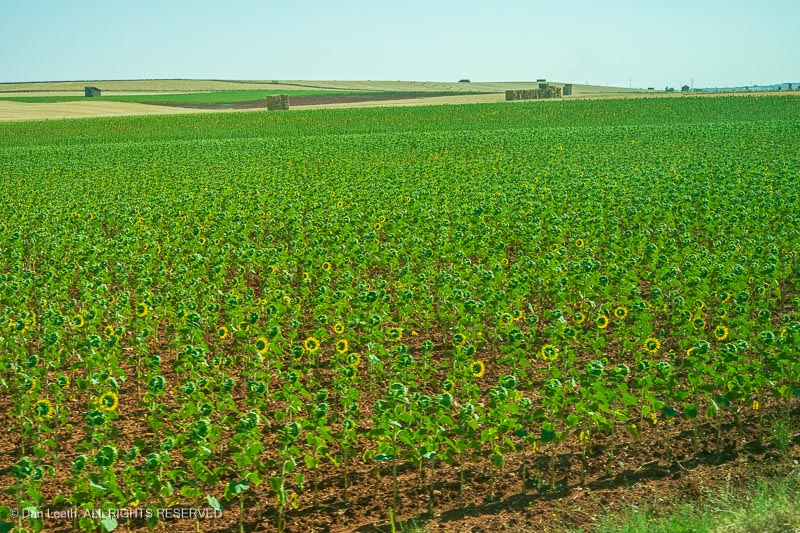
Arriving in Salamanca, we were given a time and place to meet for lunch and then set free to wander around on our own.
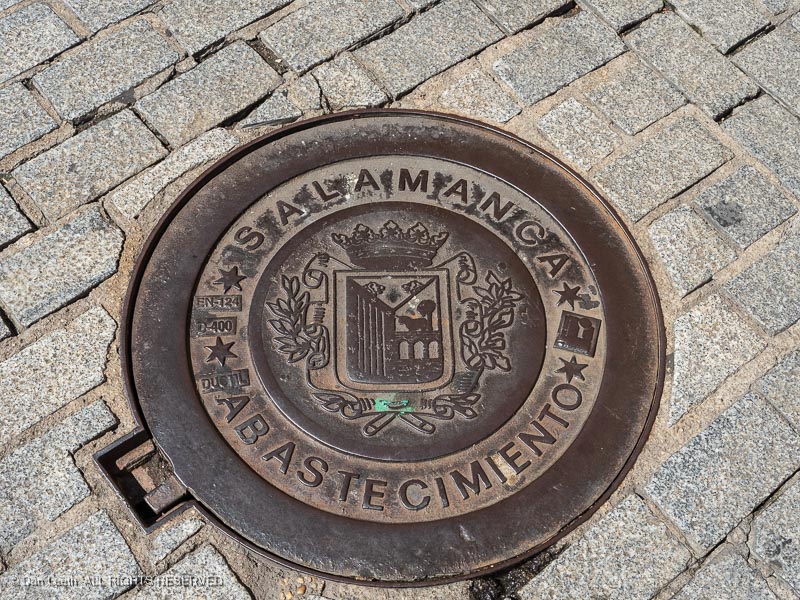
While most of our fellow passengers headed for city center, Dianne and I wandered down side streets past the Pontifical University of Salamanca.
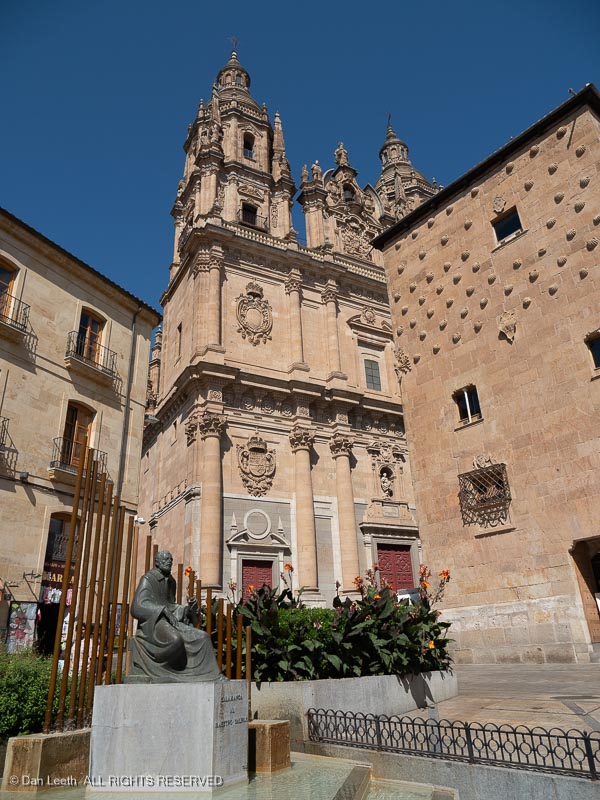
We passed apartments with windowsills holding flower boxes and satellite TV antennas.
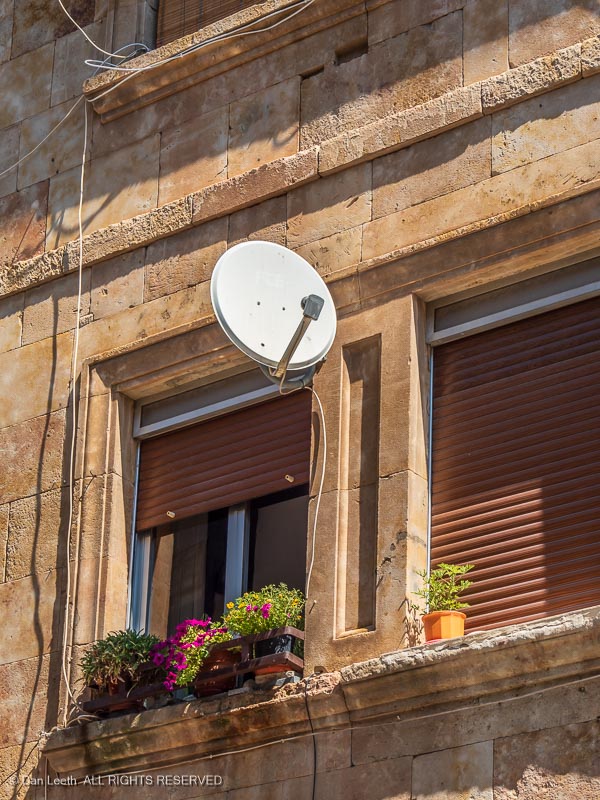
We passed decorative fountains where the water pipe stems from the character’s mouth.

We walked past businesses that might be worth a visit…
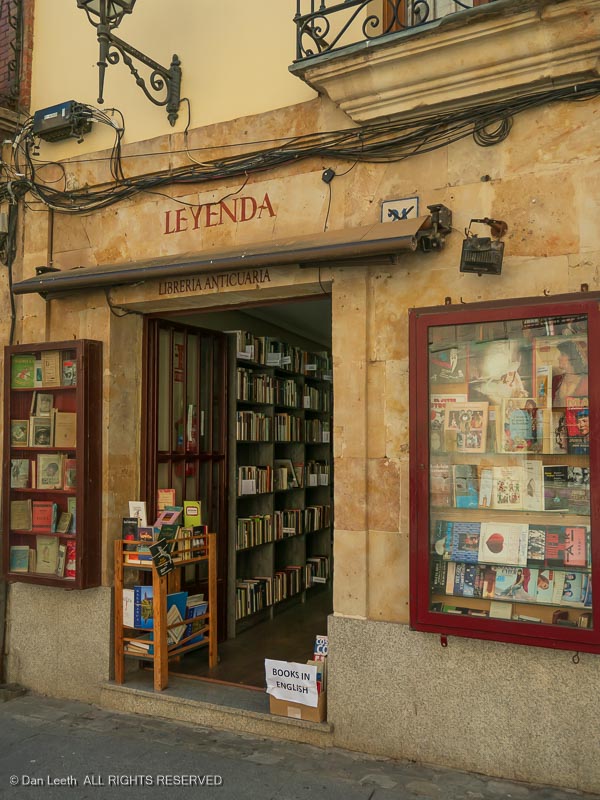
…and others that weren’t.
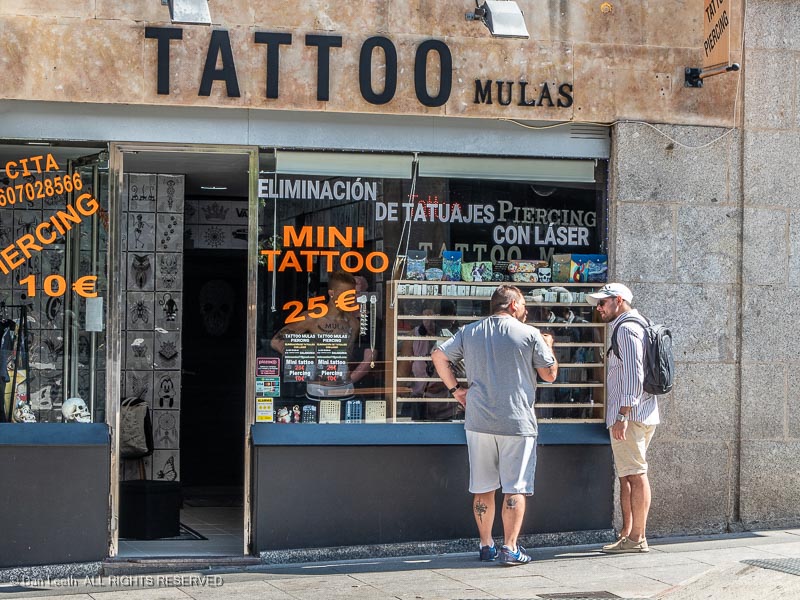
We eventually passed through Plaza Mayor, the main square in the center of town.
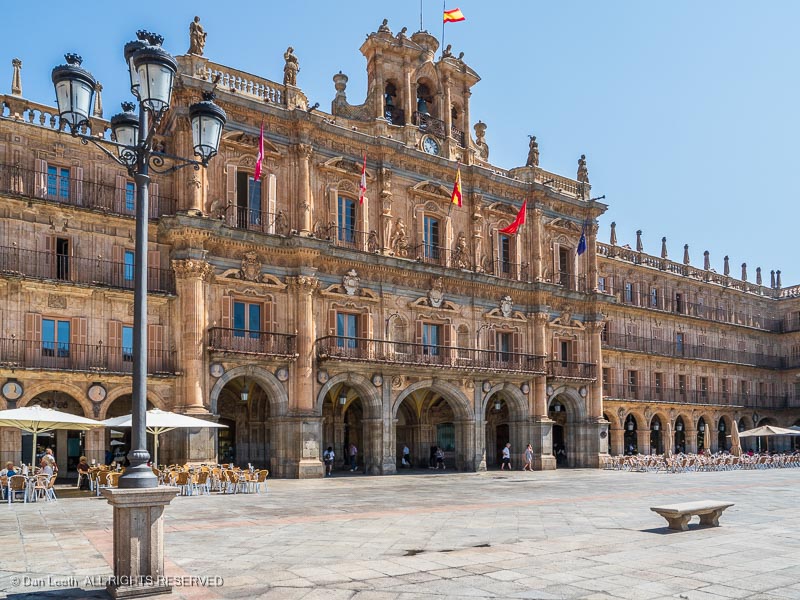
Here, dozens and dozens of empty tables awaited lunch-time diners.
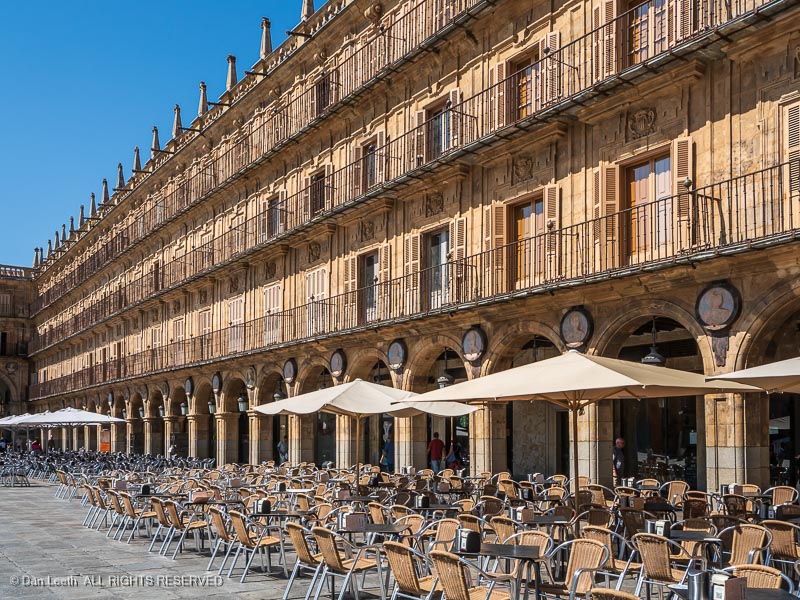
Our lunch would come at a local hotel…
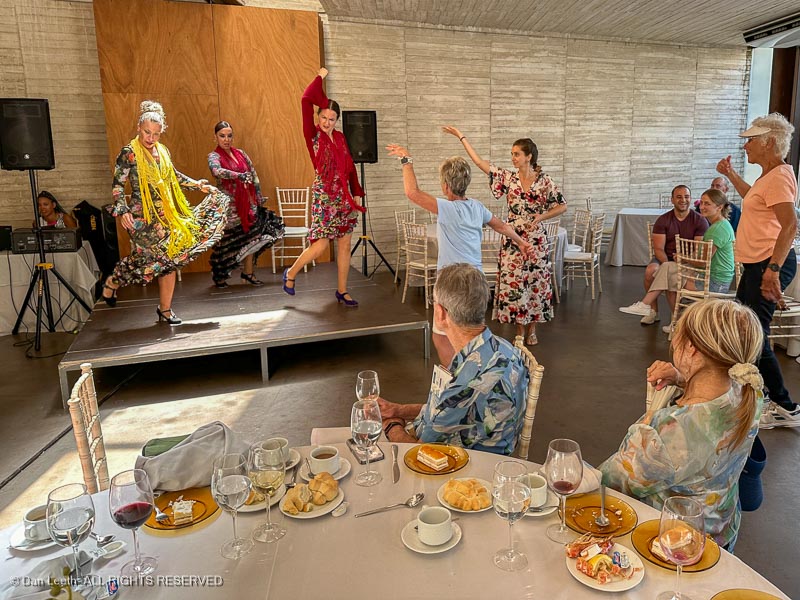
Where we were treated to a flamenco dancer show.

Audience participation followed the formal performance, with even the audio-operator’s young daughter joining in.

After lunch, we went on a short tour with a local guide. One of the things she showed us was how to find Salamanca’s famous toad and skull stonework on the wall of the university’s main entrance.
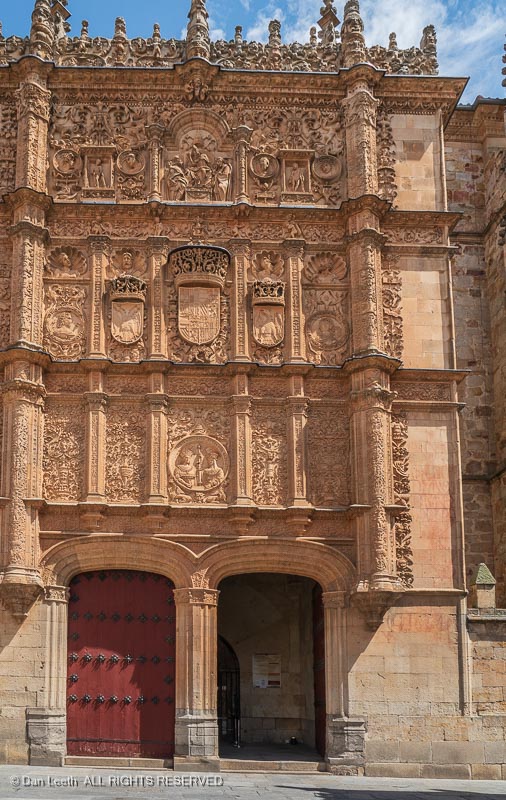
Given enough time, I probably would have maybe perhaps found this on my own, but it was a lot easier with our guide pointing out the location.
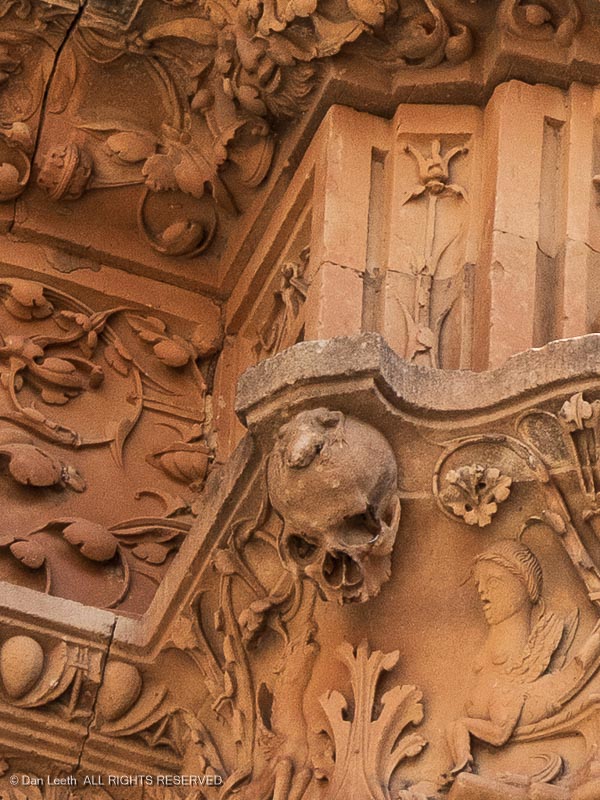
As for its meaning, she pointed out that the toad represents females and the skull connotes death. The message was that if students (all males back then) engaged in hanky panky, bad things would happen.
Another interesting piece of stonework our guide pointed out, was found on the side of the Cathedral of Salamanca.
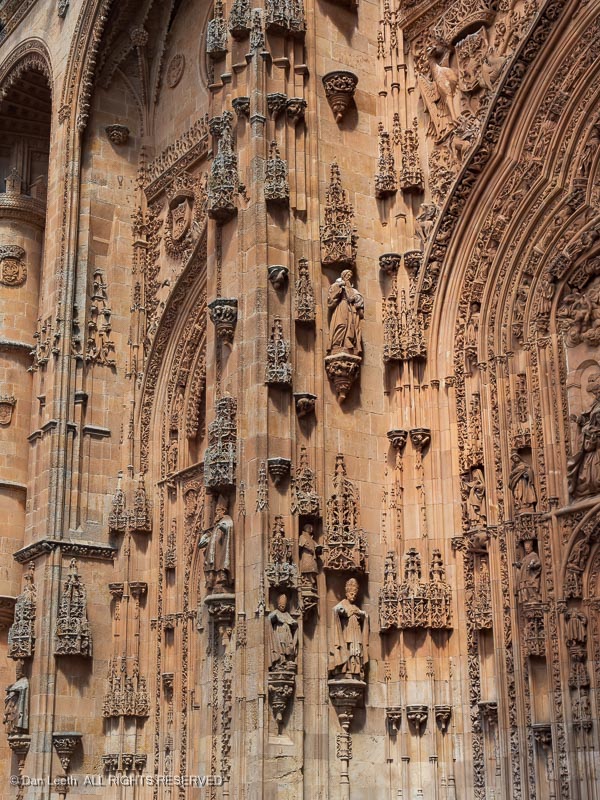
Here, on the facade of this 400-year-old church, diligent observers will find an astronaut…

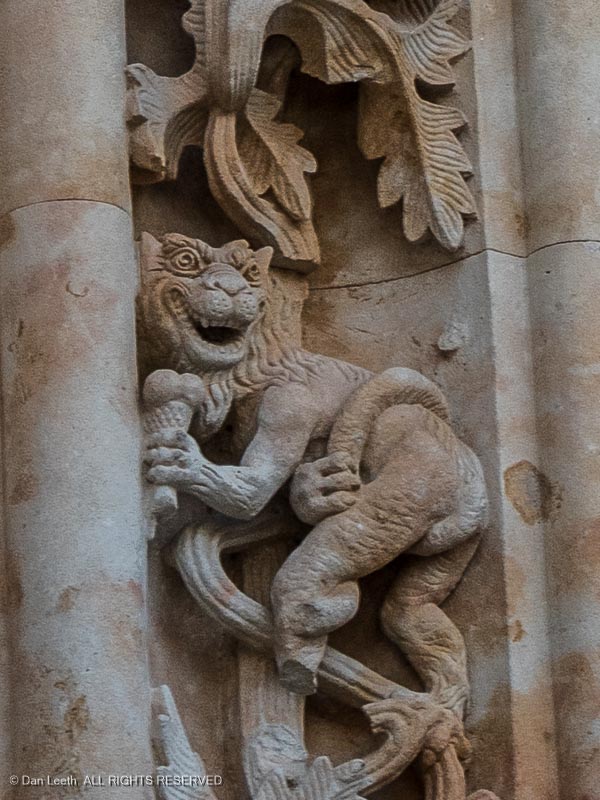
…and a dragon enjoying an ice cream cone.
The images, our guide tells us, were not 400-year-old prognostications of the future . They were actually added when restoration work was done to the church facade in 1992.
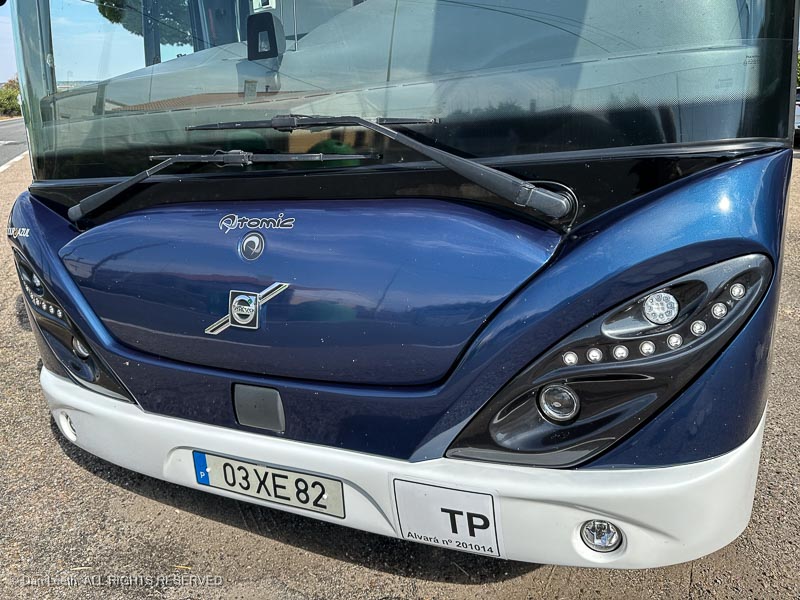
All too soon, it was time to return to the bus for the exciting, two-hour drive back to the boat.

